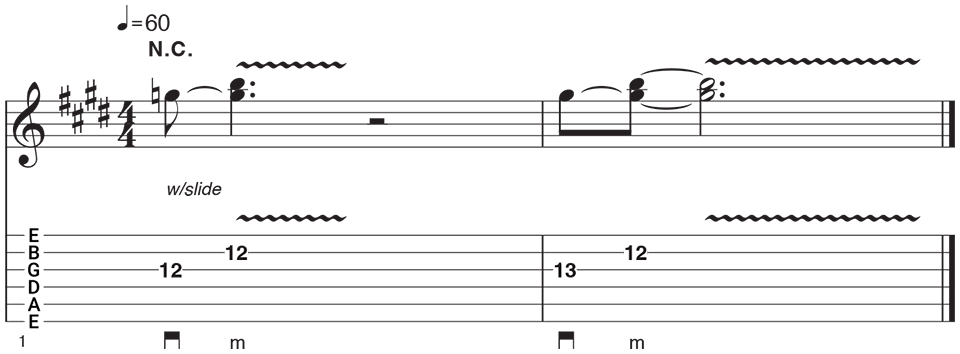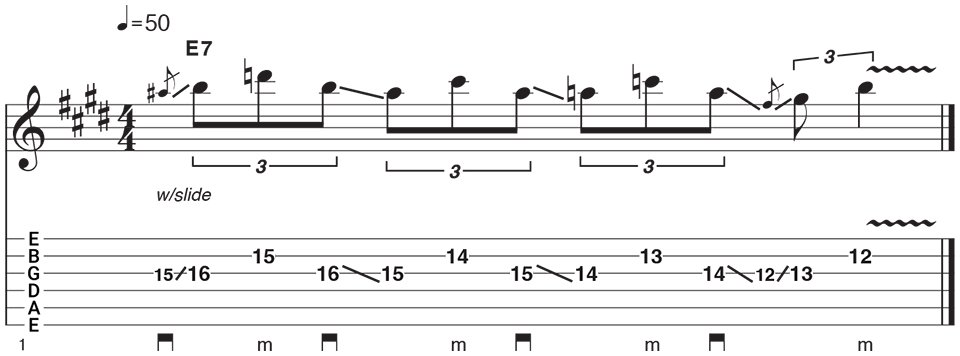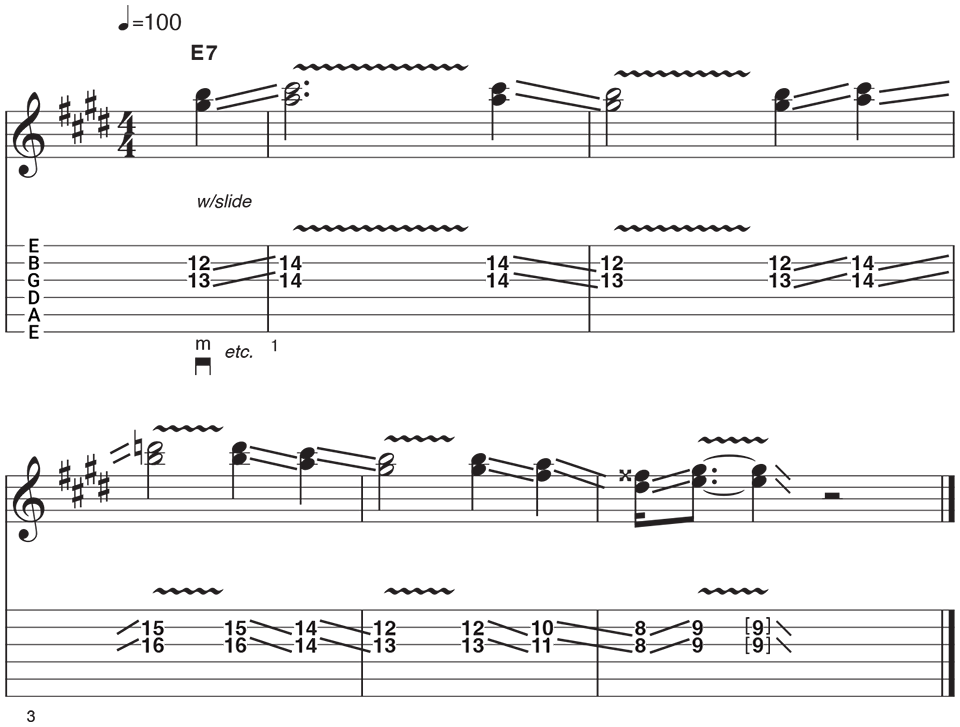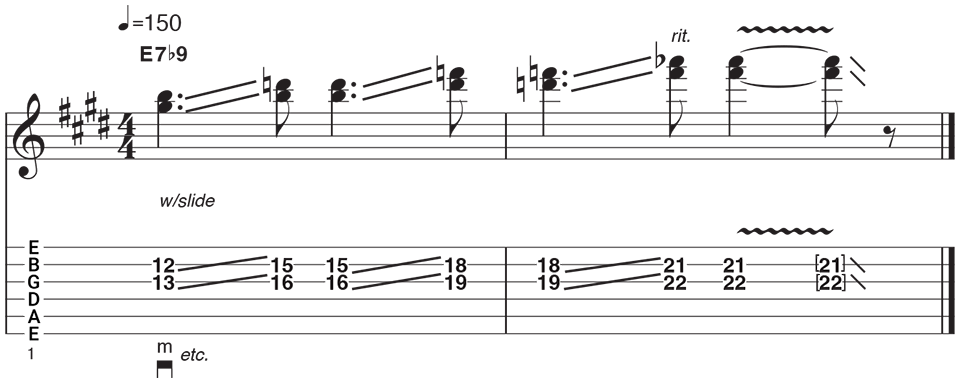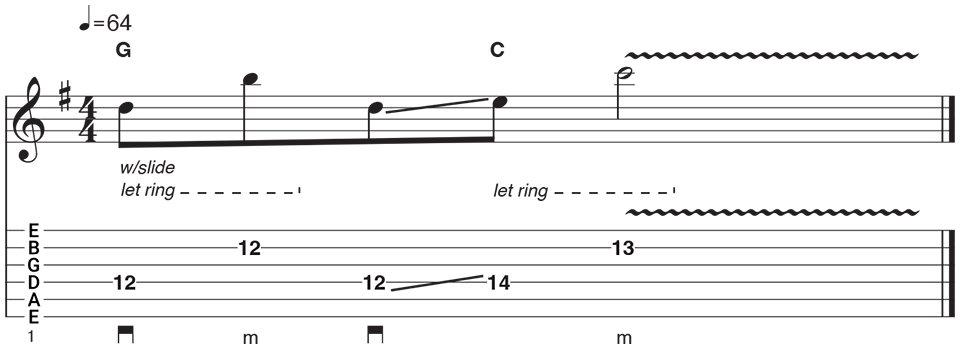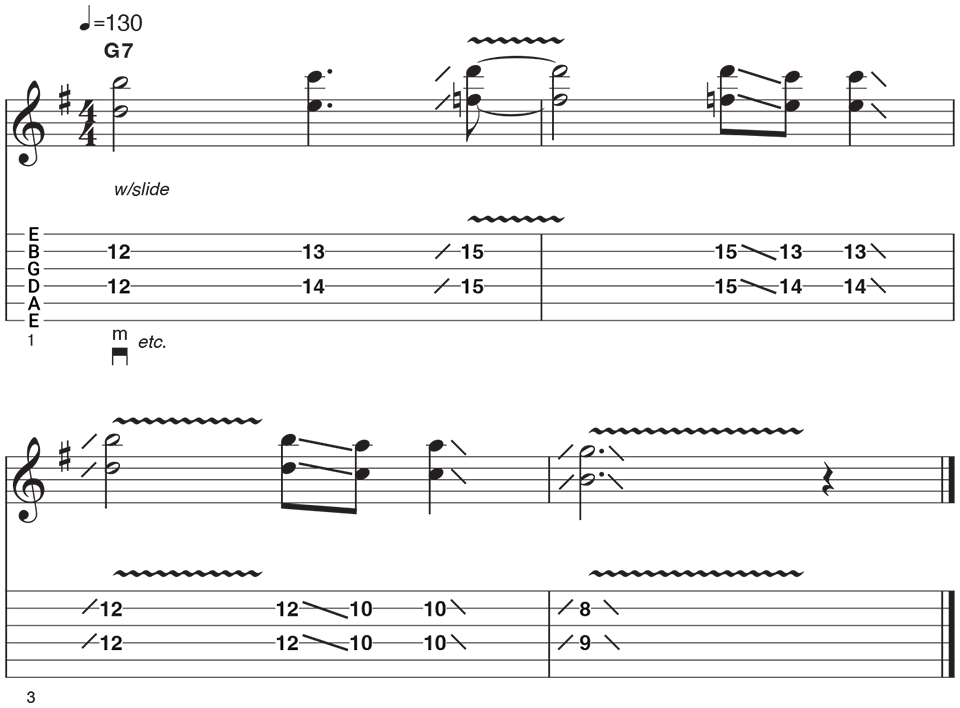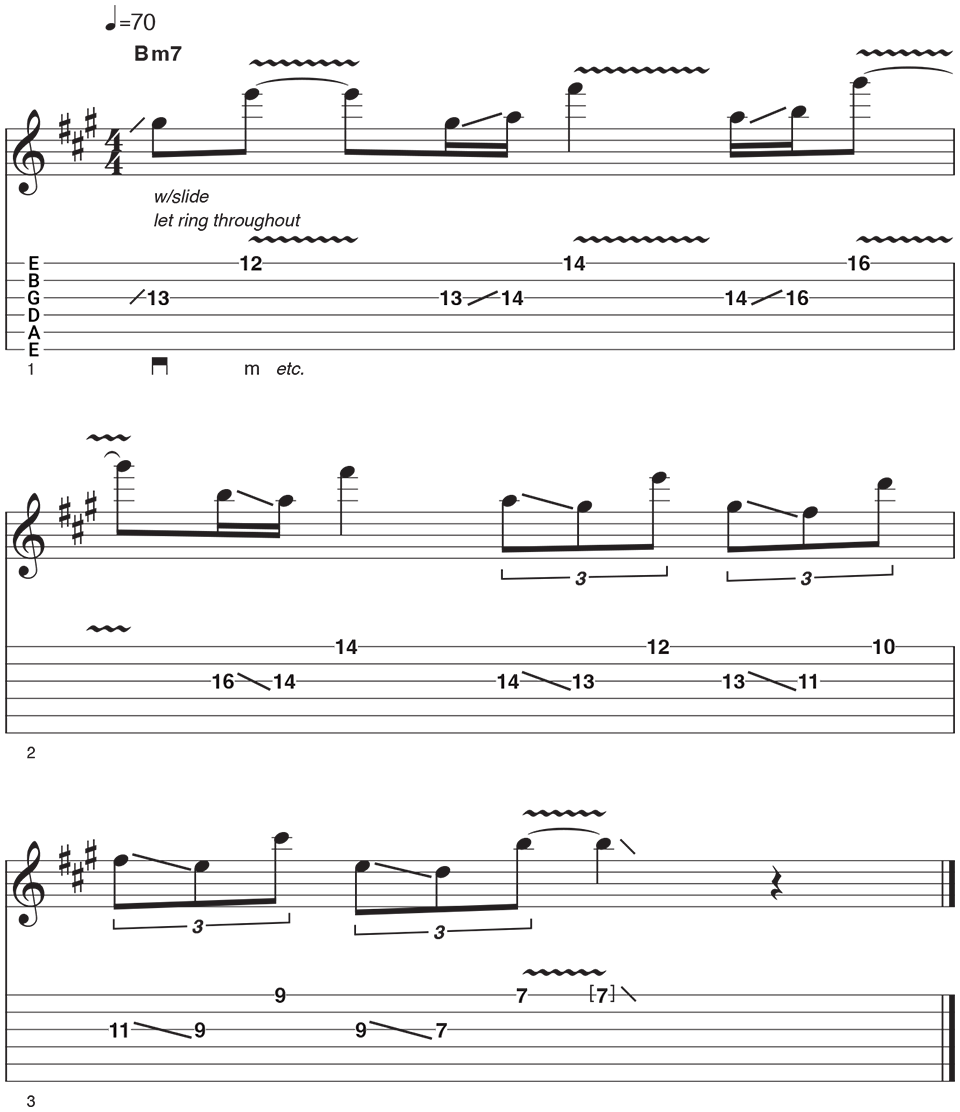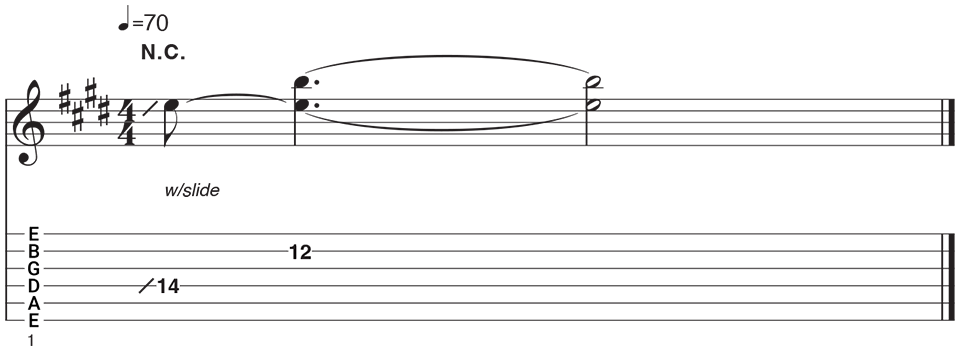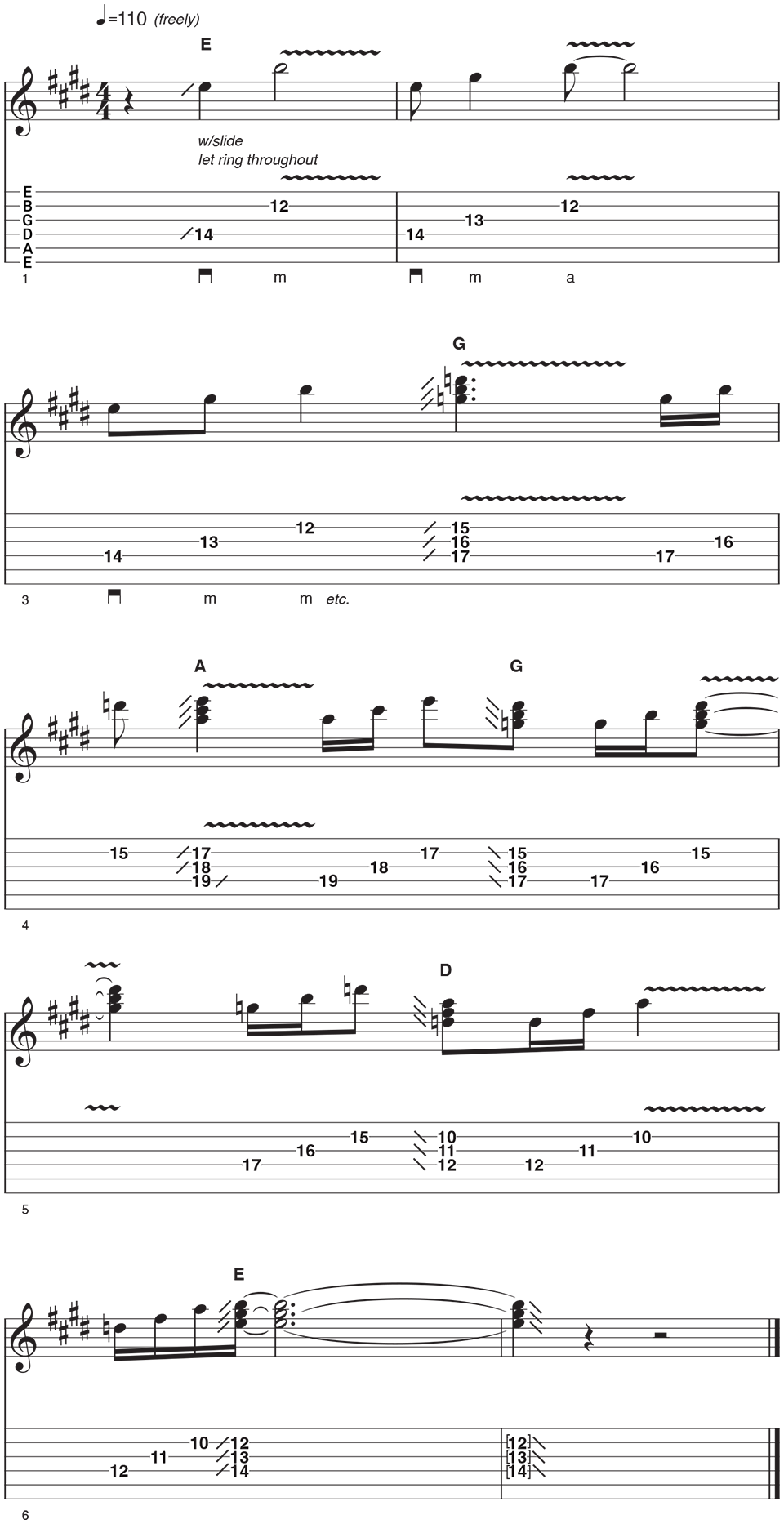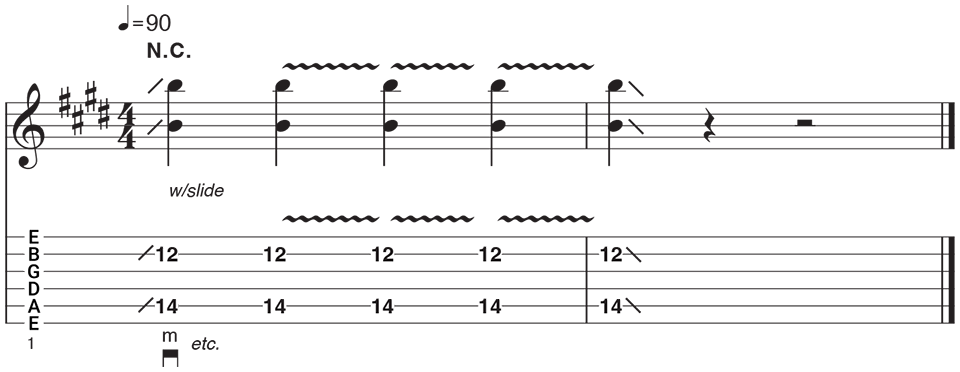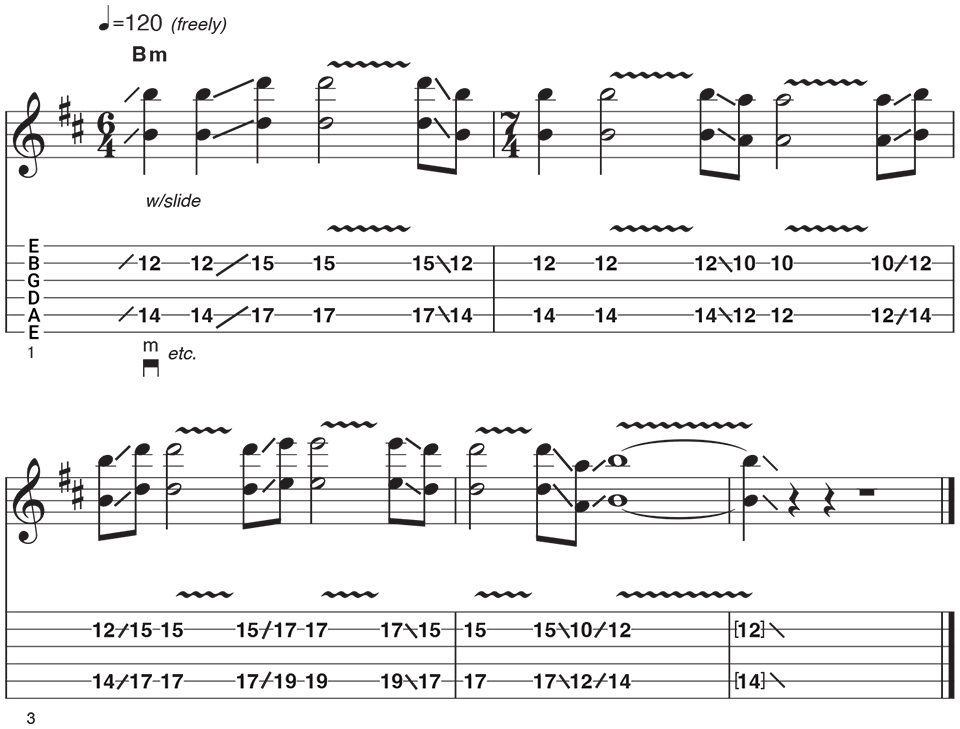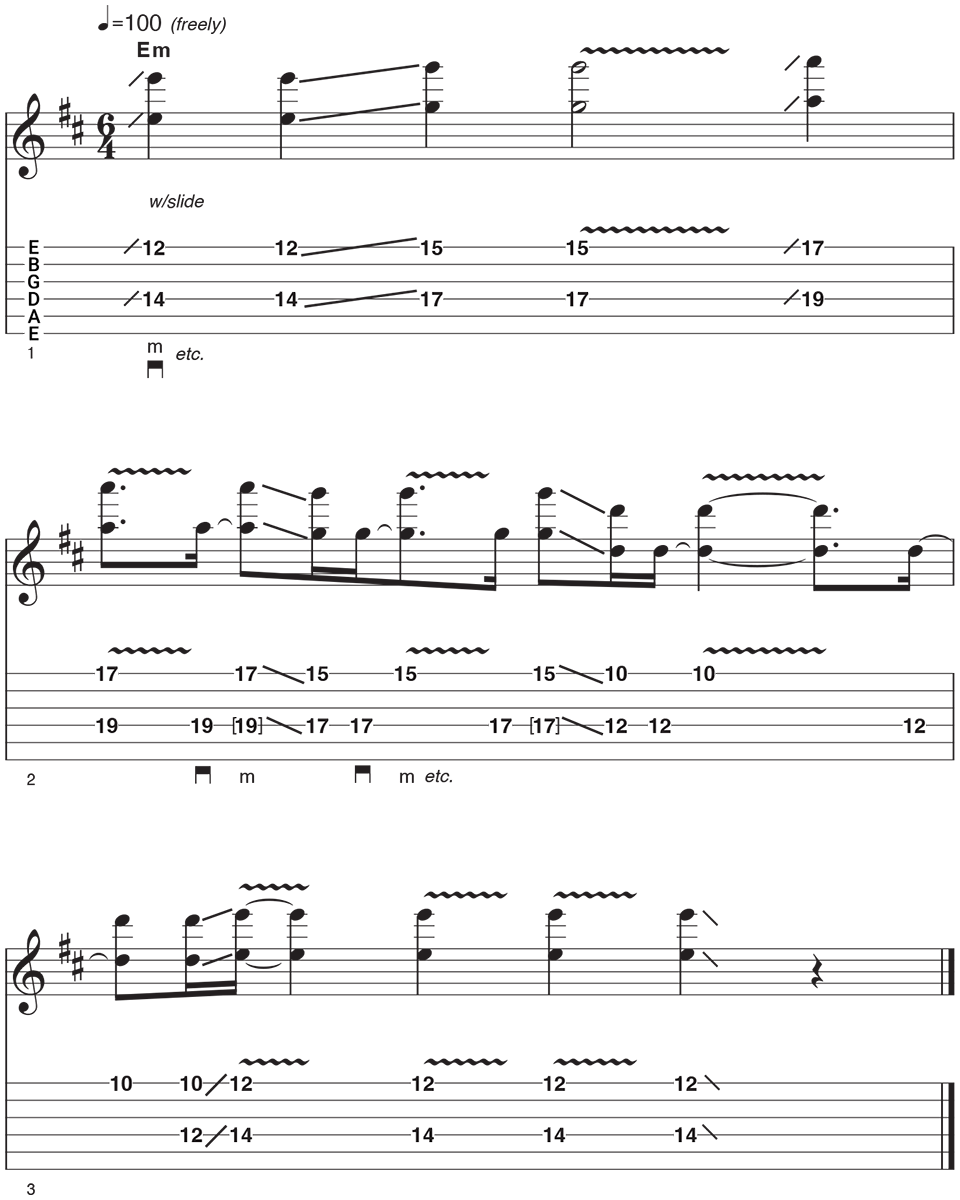"Slide like Joe Walsh!" Brett Garsed teaches his angled-slide technique that lets you play lines like Walsh used in the James Gang and Eagles — but in standard tuning
The masterful Australian slides through 12 examples with blues-rock grit, using 5ths and octaves
In chess, American football and musical theater, there is a reverential term known as a triple threat. It refers to somebody with three outstanding and separate attributes that, together, put them at the top of their game.
It can also be applied to musicians such as Brett Garsed.
His triple threat comes from his skills at hybrid picking, legato and slide guitar. Fully primed with this tasty trio of techniques, the modest virtuoso positively oozes with precision and expression in equal measure.
But while his picking and fretting hands are phenomenal, this tutorial aims to both demonstrate his skill as a slide player and inspire you to push beyond the norms of slide guitar tropes.
This tutorial will uncover just how far you can actually go. So if slide is a style you already enjoy playing (or, indeed, plan to), this is especially for you.
And if you want to learn even more, check out Brett's new book, Modern Slide Guitar Techniques in Standard Tuning.
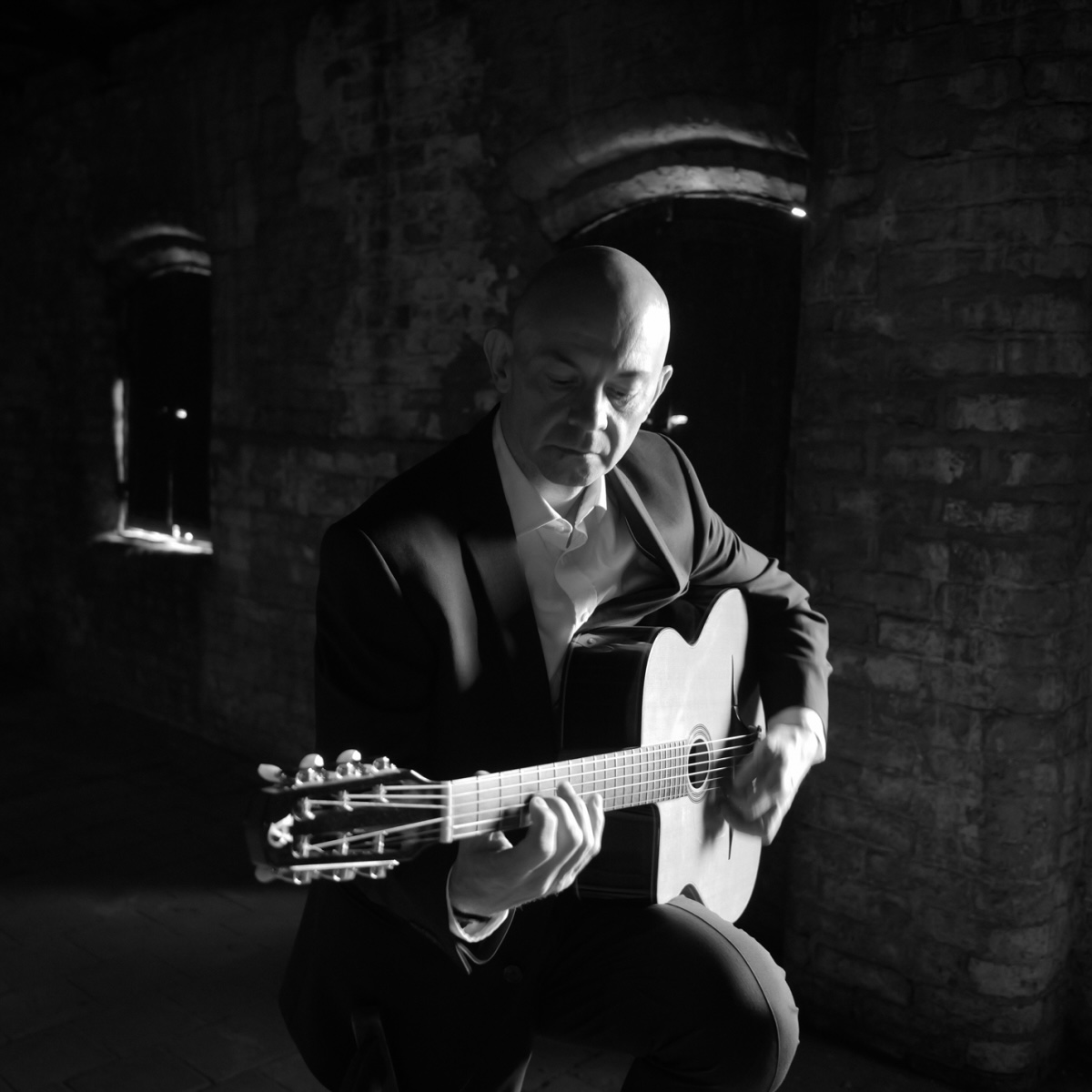
John has performed with artists as diverse as John Williams, Frank Gambale, Paco Peña, Biréli Lagrène and Stochelo Rosenberg. He has also toured with Carl Palmer and John Jorgenson. Being a fan of jazz, blues and fusion players, John is well skilled to transcribe and explain Brett's musicianship.
Brett's slide journey started as a teenager but changed after he saw Joe Walsh play "Rocky Mountain Way" on TV. Like Joe, he was using open E tuning (E B E G# B E). This gives a varied set of intervals between the strings, but many are unobtainable in standard tuning.
All the latest guitar news, interviews, lessons, reviews, deals and more, direct to your inbox!
Unless you’re super resourceful and creative like Brett.
Frustrated with having to switch tuning or guitars, he explored blending slide playing with his conventionally tuned non-slide playing. Brett started holding the slide at an angle, aided by his decision to place the slide on his second finger. This allowed him, with some micro adjustments guided by his ear, to access open-E tuning intervals without having to change from standard tuning.
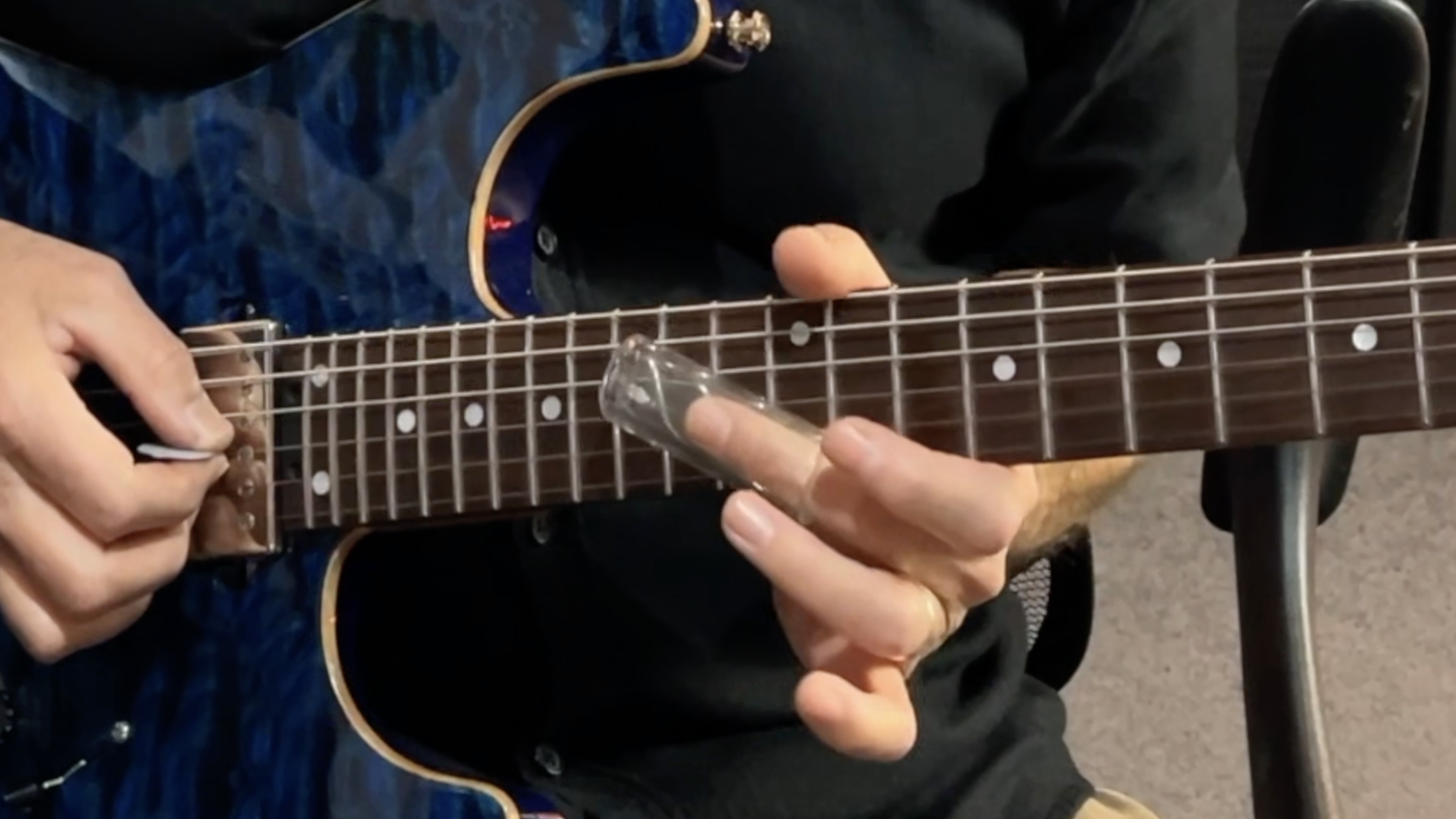
This discovery opened up a whole new vocabulary, allowing him to blend traditional open-tuning lines and pedal-steel ideas with melodic patterns and shapes in a fluid way, and without leaving standard tuning.
Before you tackle the examples, the two main considerations with slide guitar are tuning and muting. For the former, you could consider playing the following 12 exercises with static drone notes from a keyboard to help refine your intonation. Tip: Always aim to play above the actual fret wire.
As for muting, Brett lightly rests the third and fourth fingers of his picking hand on any unplayed strings. Unusually for a slide guitar player, he sticks to his regular hybrid-picking combination of pick and second finger (m) for most of these examples, bringing in the third finger (a) for three-note chords and arpeggios.
Brett's slide examples
Example 1: Straight and angled slide playing
The conventional approach to slide guitar is to position the slide straight across the strings, which is completely fine for single notes but gives you a limited range of useful intervals when considering double-stops and chord fragments, particularly in standar tuning. To provide a wider selection of intervallic options, Brett shows how he angles the slide to sound a minor third between the second and third strings.
Example 2: Bluesy descending phrase
Here an angled-slide technique is used to play a Joe Walsh–inspired blues line that the James Gang/Eagles legend would normally execute in open E tuning. However, in this case and for all of the examples that follow, Brett's using standard tuning. Take care to observe his picking-hand articulation too, as he chooses to use the pick and second finger (m) predominantly.
Example 3: Slide double-stops
In this example, Brett alternates between angled and straight slide placement to harmonize an E Mixolydian scale (E F# G# A B C# D) in diatonic thirds. Pay attention to the detail here and aim to capture some of the slides, vibrato and grace-note dips that all add to his bluesy delivery.
Example 4: Diminished phrase
Keeping with the minor-thirds theme, this spells out a symmetrical diminished-7th sound (F G# B D) by moving this fixed shape along a pair of strings in three-fret slides. Keeping to the E7th tonality, this could also be considered as four from the five notes found in E7b9 (E G# B D F).
Example 5: G and C chords as 6th intervals
Brett expands the double-stop concept here by skipping strings, allowing him to highlight the sixth intervals found at the heart of both a G and C triad. Here he’s selecting the second and fourth strings, muting the third string located between with the third finger (a).
Pay attention to the smoothness of his vibrato. It’s good to acknowledge just how many of these ideas end with a rapid descending slide to no fixed pitch. The little details definitely accumulate in terms of delivery and musical personality.
Example 6: 6th intervals in G (second and fourth strings)
Sticking with the sixth-interval idea, Brett neatly defines G Mixolydian (G A B C D E F) with an alternation between angled and straight postures, choosing between major and minor sixths. Adopt a muting technique similar to what was used in Example 5 to keep extraneous noise at bay.
Example 7: Sixth intervals in B Dorian (first and third strings)
With a switch of location and tonality, Brett neatly articulates a phrase in B Dorian (B C# D E F# G# A). Again, he's using diatonic sixths with a combination of straight and angled slide approaches, although this time these are situated on the first and third strings.
Example 8: 5th interval with slide
Returning to the second and fourth string, Brett angles the slide even further to span two frets, allowing him to articulate the fifth interval found between E (14th fret, fourth string) and B (12th fret, second string). Again, this could be relocated between the first and third strings using the exact same shape, situated one string down.
Example 9: Major triads with angled slide
As Brett states, it’ll take a bit of micro adjustment to get these fifths in tune, but once you achieve this, you can also add the third string to create a complete major triad. Notice the use of the third finger (a). These shapes can also be slid up and down the fretboard to articulate a shifting major sequence.
Example 10: B octave on second and fifth strings
"These are quite tricky to get in tune," Brett admits.
Taking the string skipping technique a little further, here he articulates an octave found between the second and fifth strings. This means two strings need to be muted between the desired notes. Brett uses his third and fourth fingers to achieve this. Take it slow, getting the right slide angle and muting the inner strings.
Example 11: Octaves on second and fifth strings
Once again, you’ll need to make some micro adjustments to get these octaves in tune, but once that’s secure you can start to move them horizontally along the length of the fretboard. Again, Brett’s sticking to the second and fifth strings here.
Example 12: Octaves on first and fourth strings
You can take this angled shape and locate it now on the first and third strings, giving you an octave shape that can be moved horizontally along the length of the fretboard. Get these examples nailed, then enjoy the sonic rewards — and the looks of surprise from other guitarists!
Slide Q&A with Brett Garsed
Slide guitar is often played with a high action, but your guitars are set the same for both slide and standard playing. What is your action preference?
I try to find a balanced action that lets me do my regular playing but is also high enough to allow me to play slide as well. It is a compromise that has to be made for the convenience of just carrying a bottleneck around instead of another guitar.
I use D’Addario NYXL .010–.052 strings these days. I used .011’s for quite a while but I prefer the lighter top three strings now. I find that the heavier bottom strings help to support the slide and prevent me from hitting the frets too much. That can happen a lot on the high E string so I have to adjust my technique quite a bit to try and prevent it.
You use a glass slide. What weight/thickness is it?
I use a Jim Dunlop 211 glass slide, and if I see one in a store I buy it as they’re not easy to find. They’re just the right weight and mass, and I really like the way they fit firmly on the top part of my second finger as the don’t come off and it also gives me more reach for the angling techniques.
I find glass and chrome sound very similar, so I’d like to try chrome again as I really like Paul Gilbert’s idea of using a magnet to attach it to the guitar, but I can’t find a chrome slide long enough. I’ll keep looking, and if I find one, I’ll have to ask Paul where he gets his magnets from!
What type of overdriven tone do you like best for slide as regards amp settings and maybe the guitar's controls?
I’m using the Axe FX III or the FM9 for my tone and I use the Euro Blue amp model which I believe is emulating a Bogner Ecstasy. I have just enough top end in my sound so I can use the front pickup with it’s tone control on 10. I have the tone control for the back pickup on 3 or 4 to tame that top end when I’m using it.
I’m using a Suhr Riot overdrive model which is in the Axe FX III and I really like it. Fuzz pedals sound great on slide but I don’t like them for non-slide soloing, so I prefer to use my regular tone all the time. That way, I can decide to play slide or not depending on my mood in the moment.
You've a slide book available. What's in it and where can people get it?
Modern Slide Guitar Techniques in Standard Tuning is released through the publishing company Guitar Vivo. I cover standard slide techniques and then go over angling techniques in great detail. There's a lot more content, in addition to these topics, as I have many ideas about slide guitar.
It was great fun to do, getting much of what I love about slide all into one book. The tuition books I do for Guitar Vivo also have accompanying video and I narrate them so there’s a visual aspect as well as full transcriptions of everything, including various improvised solos.”
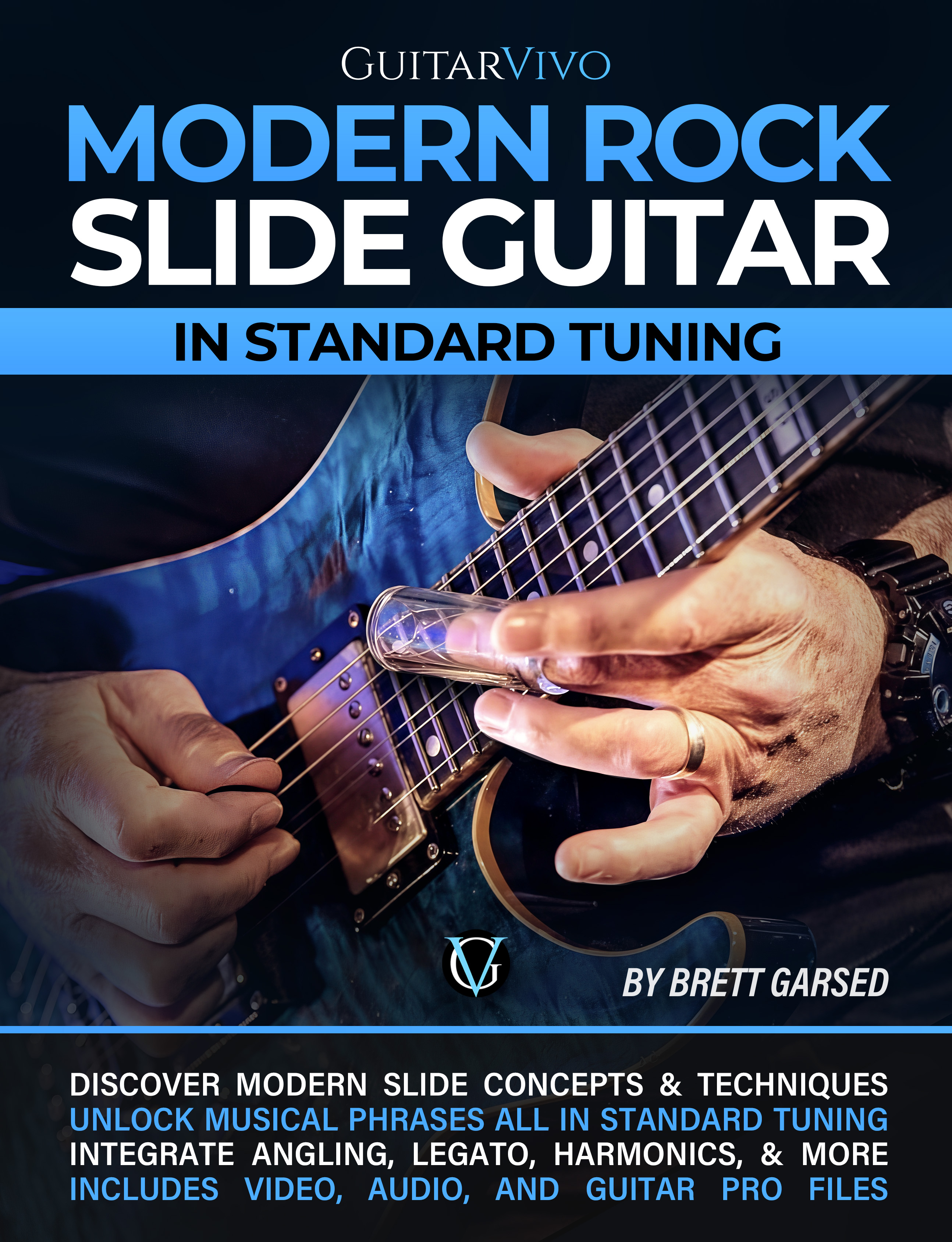
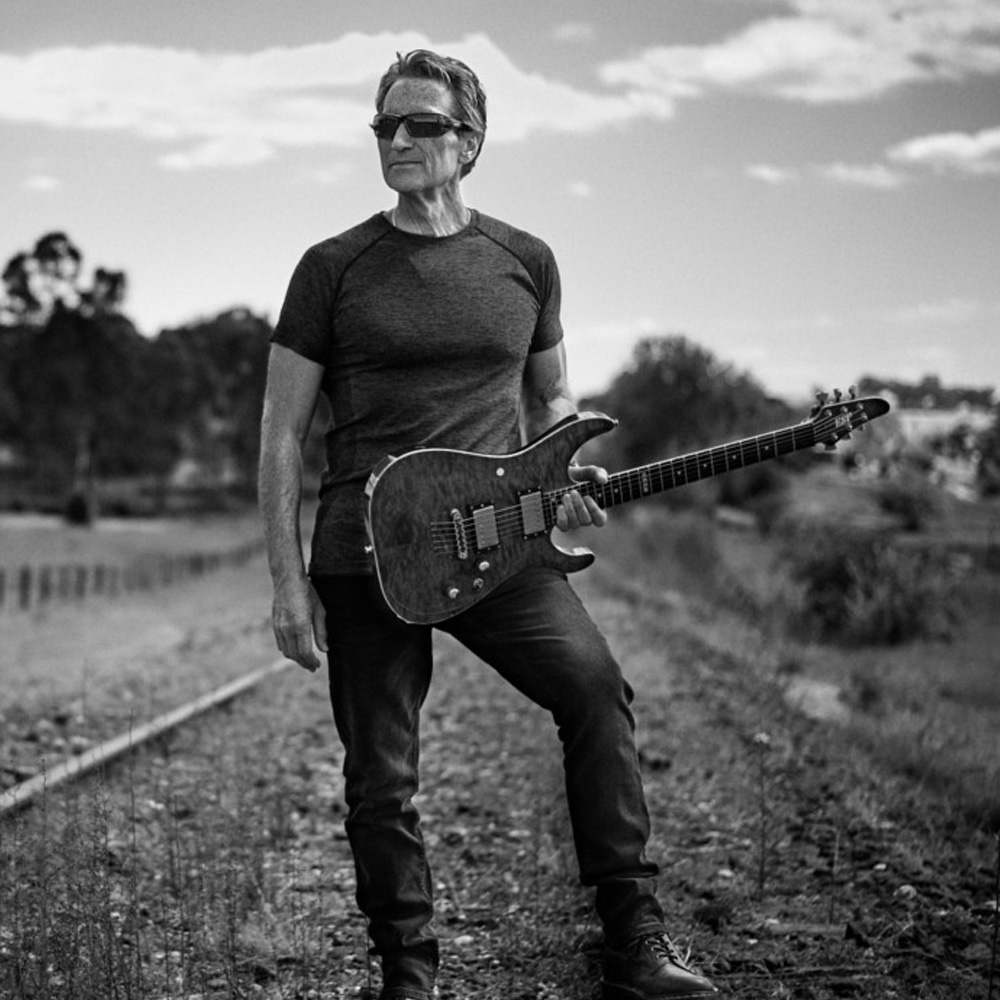
Brett is an Australian guitarist, best known for his work with John Farnham and Nelson. His albums with another stunning guitarist, TJ Helmerich are revered for great tones, techniques and compositions; their debut Quid Pro Quo is well worth checking out. Brett's solo album, Big Sky is also a vibrant listen, filled with emotive melodies and stunning hybrid picking/legato fuelled solos.
- John WheatcroftGuitarist

